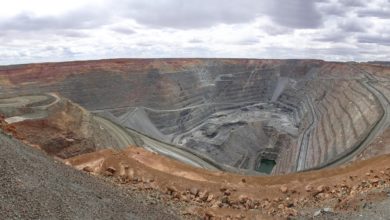Could the Commercial Real Estate Market Be the Next Thing to Break?

Could the commercial real estate market be the next thing to break in this bubble economy?
The rampant money creation and zero percent interest rates during the COVID pandemic on top of three rounds of quantitative easing and more than a decade of artificially low interest rates in the wake of the 2008 financial crisis created all kinds of distortions and malinvestments in the economy and the financial system. It was inevitable that something would break when the Federal Reserve tried to raise interest rates in order to fight the price inflation it caused with its loose monetary policy.
Easy money is the lifeblood of the economy and the financial system. The Fed started draining that lifeblood away when it stepped in to fight the price inflation it could no longer write off as transitory. There was no way the central bank wasn’t going to break something.
The first crack in the dam was the failure of Silicon Valley Bank and Signature Bank. These two banks were just the tip of the iceberg. In fact, the entire banking system is teetering on the brink.
The Fed rushed in to shore up the financial system with a bank bailout. In just two weeks, the central bank created nearly $400 billion out of thin air and injected it into the banking system. This plugged the hole in the dam, at least for the time being.
But at its March meeting, the Fed hiked rates again. The bailouts did not address the underlying problem. The bottom line is that it is inevitable that something else will break — there will be more cracks in the dam.
Commercial real estate is a good candidate for breakage.
I’ve written about the issues in the housing market caused by the Fed. The commercial real estate market is under even more pressure due to rising interest rates. As a report by Yahoo Finance noted, “Big owners of property around the country were already under pressure from the Federal Reserve’s aggressive campaign to raise interest rates, which raised borrowing costs and lowered building values.”
Commercial real estate owners also continue to deal with the fallout from government shutdowns of the economy during the COVID pandemic. Even today, a lot of commercial real estate sits empty while people work at home.
But there is an even bigger problem looming on the horizon.
Loans are coming due.
According to Trepp, $448 billion in commercial real estate (CRE) loans will mature in 2023. Banks hold $227 billion of those loans. Over the next five years, $2.56 trillion in commercial real estate loans will mature with $1.4 trillion held by banks.
With rates rising and credit conditions tightening, many loans may face an uphill battle as refinancing becomes more costly, especially if banks and other lenders look to reduce their CRE exposure as we saw happen during previous recessionary cycles. This could lead to lower property values and larger losses for lenders.”
According to a real estate economist quoted by Yahoo Finance, things were already bad before the bank failures.
There were already liquidity issues. There were fewer deals getting done. Access to capital was getting scarcer, and this banking crisis is almost certainly gonna compound that.”
According to Yahoo Finance, small to mid-size banks hold most commercial real estate mortgages. According to a report by a Goldman Sachs economist, banks with less than $250 billion in assets hold more than 80% of CRE loans. These are the banks under the most pressure due to this unfolding financial crisis.
In fact, Signature Bank was a big lender in the New York City commercial real estate market, extending loans for office towers and multifamily properties. As of the end of 2022, Signature held some $36 billion in commercial real estate loans.
We’ve already seen signs of stress in the commercial real estate market. Last month, Columbia Property Trust defaulted on $1.7 billion in floating-rate loans tied to seven buildings in New York, San Francisco, Boston, and Jersey City. Shortly thereafter, Brookfield Asset Management defaulted on $750 million-plus in debt backing two LA office towers.
BlackRock Global Fixed Income CIO Rick Rieder told Yahoo Finance the problem won’t resolve itself anytime soon.
When you raise rates this quickly, the interest-sensitive parts of the economy, and particularly where there’s financing or leverage attached to it, then that’s where you create stress. That’s not going away tomorrow.”
Rieder didn’t say it, but we all know who “raised rates quickly” – Powell and Company over at the Federal Reserve. But as I pointed out earlier, the Fed really created this problem long before when it held rates artificially low for so long. It incentivized all of this borrowing. Everybody just assumed rates would stay low forever so they levered up and took on more and more risk.
Borrowers will likely face tightening lending standards in the days ahead. According to a Goldman Sachs note, bank lending levels had already tightened significantly over the last two quarters as recession fears ramped up. Banking system instability will lead to even more tightening of credit.
Mainstream economists and Fed officials insist that the banking system is sound. Economists quoted in the Yahoo Finance article insisted that the issues in the commercial real estate market don’t pose a systemic risk. Everything will be OK, they claim. But these same people told us the subprime problem in 2007 was contained, inflation was transitory, and quantitative easing was a temporary program that would be unwound.
In other words, they don’t have the best track record.
The commercial real estate market might not be the next thing to break. But I can’t emphasize this enough — something else will break.
Be prepared.
Call 1-888-GOLD-160 and speak with a Precious Metals Specialist today!
Buka akaun dagangan patuh syariah anda di Weltrade.
Source link






